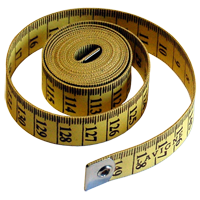
The quest for lead generation is a simple fact of marketing life. Companies require personal data to fill their sales funnels and maintain momentum, and the data that they seek varies from the simple to the extreme.
Informational requirements vary greatly depending on the campaign and the product or service being sold. But more than anything it’s influenced by the need (or greed) of the departments in your company.
Form Threshold Defined
Landing Page form threshold is the minimum agreed upon set of information requirements that still produce an acceptable conversion rate.
The design of a lead-gen form on a landing page always starts in the same place (simplicity), and grows according to the same law of information desire.
The following fictional dialog may sound familiar:
Marketing Director:
We need to capture 5,000 new leads to target our latest Christmas 2-for-1 promotion.Designer:
What fields do we need on the landing page?Email Marketer:
Let’s go with First Name and Email. Keep it simple. All I need is the email for destination, and the first name to personalize the communication.Sales Manager:
Well, we need the phone number for the inside sales team, and I’d love to know who they work for.Product Manager:
Let’s get their cell number too!Marketing Director:
You know what, if we can capture what city they are from we can send them specific geo-targeted promotions later on.IT Guy:
Our tracking doesn’t coever every base right now, so can we ask them how they heard about us?And so on…
We’ve all been in those meetings right? And you typically have to defend your stance of minimalist design for the sake of user experience, or you have to put your foot down to get that all important extra field added to benefit your team and your work goals.
And so, we went from this to THIS…
* These fields are totally not required dude…
Which form should you use and why? Neither… yet.
Different people will have different opinions here. The User Experience expert will fight hard for the minimalist form and the sales manager will fight for more information and rightly so. But sometimes those extra form fields are perfectly valid. So how do you decide which one to go with?
It’s all about balance. Your goal here is to balance conversions with the quality/quantity of the information gathered.
Building the perfect lead-gen form in 3 easy steps
If you want to create the best possible lead-gen landing page form, then follow these 3 steps to remove the subjective debate from your decision making and company meetings.
Step 1 – Prioritize the form fields
Ok, so now you have 7 fields instead of 2. Vote collectively on how important they are and assign a prioritized order to each “extraneous” field. You will now create 6 variations of your lead gen form: 2 fields, 3 fields, 4 fields, 5 fields, 6 fields and 7 fields, using your priority scale to dictate which field gets added to yoru primary form to create each extra variation.
Step 2 – Set up an A|B|C|D|E|F split test
So you have 6 forms, magically inserted into your overly complex testing tool (such as Google Website Optimizer) and you’re ready to go. At this point everyone from the original meeting is now sweating bullets, worried that it’ll be their extra form field that makes the conversion rate plummet. Now we get to sit back and watch the numbers to see how the conversion rate changes according to form length.
Step 3 – Analyze the results and choose a winner based on real data
Now comes the fun (or embarrassing) part. You have your manila folder full of reports and you’re sitting round the boardroom table ready to present. The shortest form comes back with a higher conversion rate as expected, progressing downward to the longest form. One surprise exception is that adding the “how did you hear about us?” had no discernible effect on conversion, so it might be worth adding that into the best performing short form and re-testing. And yes, a Multi-Variate Test (MVT) would be ideal here, to really identify the best possible combination of fields.
Now you have to look at the conversion numbers and agree on a threshold of acceptable conversion. Once you have this, you can argue back and forth about how much conversion % you are willing to sacrifice to introduce the most important extra fields.
At the end of this process you will know 2 things:
- Which form has the best conversion rate.
- Which form produces the perfect blend of conversion and information capture.
So go out there and design and test your way to the perfect lead gen landing page form.
Happy lead capturing…
What Next?
Follow Unbounce on Twitter | Download the Free “101 Landing Page Optimization Tips” White Paper
